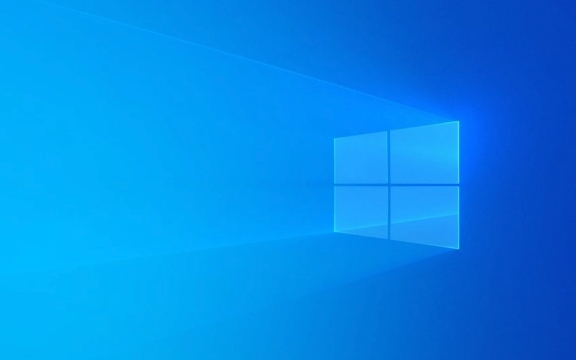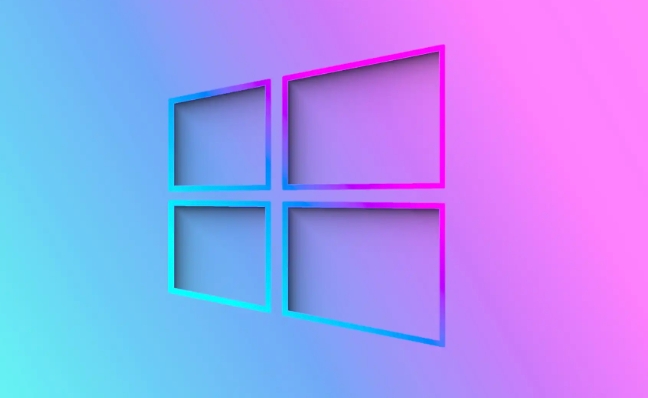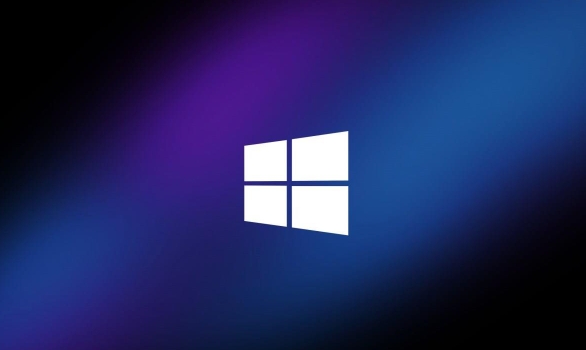Check Task Manager for high-resource apps and end unnecessary tasks. 2. Disable unused startup programs to improve boot time. 3. Run Disk Cleanup and enable Storage Sense to remove temporary and junk files. 4. Upgrade from HDD to SSD for significant performance improvement. 5. Adjust system settings for best performance by disabling visual effects. 6. Scan for malware using Windows Security and tools like Malwarebytes. 7. Keep Windows and drivers updated for optimal performance. 8. Limit background apps and uninstall unused software. 9. Reset or reinstall Windows as a last resort to restore speed. Following these steps can significantly speed up a slow Windows 10 PC without requiring costly hardware upgrades.

A slow Windows 10 computer can be frustrating, but the good news is that most performance issues can be improved with a few practical steps. You don’t always need new hardware—often, it's about cleaning up software clutter and optimizing settings. Here’s how to speed up your slow Windows 10 PC.

1. Check for Resource-Hogging Apps in Task Manager
The first thing to do is see what’s eating up your CPU, RAM, or disk.
- Press Ctrl Shift Esc to open Task Manager.
- Click More details if needed.
- Go to the Processes tab.
- Sort by CPU, Memory, and Disk to spot high-usage apps.
What to do:

- End tasks that are using excessive resources and aren’t essential.
- Look for unfamiliar processes—search them online to see if they’re safe or malware.
- Disable unnecessary startup apps (see next section).
2. Disable Startup Programs
Too many apps launching at startup can make boot times painfully slow.
- Open Task Manager > Startup tab.
- Right-click any program you don’t need at startup and select Disable.
Common ones to disable:

- Adobe Reader Updater
- iTunes Helper
- Skype, Zoom, or other communication tools (unless you use them daily)
- Printer or peripheral software
You don’t have to disable everything—just the ones you rarely use.
3. Run a Disk Cleanup and Clear Temporary Files
Windows accumulates temporary files, cache, and old updates that waste space and slow things down.
- Type Disk Cleanup in the Start menu and run it.
- Select your main drive (usually C:).
- Check boxes like:
- Temporary files
- Downloaded program files
- Recycle Bin
- Windows Update Cleanup
- Delivery Optimization Files
- Click OK > Delete Files.
For deeper cleaning, use Storage Sense:
- Go to Settings > System > Storage.
- Turn on Storage Sense to automatically clean junk files.
4. Upgrade to an SSD (If You’re Still on HDD)
This is the single biggest hardware upgrade you can make.
- If your PC still uses a traditional hard disk drive (HDD), upgrading to a solid-state drive (SSD) will dramatically improve boot time, app loading, and overall responsiveness.
- Even budget SSDs are much faster than HDDs.
Note: If you’re not comfortable replacing the drive yourself, many repair shops can do it affordably and often clone your old drive so you don’t lose data.
5. Adjust for Best Performance (Visual Effects)
Windows 10’s animations and visual effects look nice but can slow down older machines.
- Press Win S, type performance, and select Adjust the appearance and performance of Windows.
- Choose Adjust for best performance, or manually uncheck effects like:
- Animations in windows
- Fade or slide effects
- Shadows under windows
- Click Apply.
This makes the system feel snappier, especially on low-end hardware.
6. Scan for Malware and Viruses
Malware often runs hidden processes that consume resources.
- Run a full scan using Windows Security (built-in):
- Go to Settings > Update & Security > Windows Security > Virus & threat protection > Full scan.
- Consider a second opinion with a trusted tool like Malwarebytes (free version works fine).
7. Keep Windows and Drivers Updated
Outdated drivers or system bugs can cause slowdowns.
- Go to Settings > Update & Security > Windows Update and install any pending updates.
- For drivers, especially graphics and chipset:
- Visit your PC or motherboard manufacturer’s website.
- Download and install the latest drivers.
8. Trim Background Apps and Services
Some apps run in the background even when you’re not using them.
- Go to Settings > Privacy > Background apps.
- Turn off background access for apps you don’t need (e.g., Candy Crush, weather apps, etc.).
Also consider:
- Uninstalling unused programs via Settings > Apps > Apps & features.
- Turning off Cortana or search indexing if not used.
9. Reset or Reinstall Windows (Last Resort)
If your PC is still slow after trying everything, a clean slate might help.
- Go to Settings > Update & Security > Recovery > Reset this PC.
- Choose Remove everything for a full wipe (back up your files first).
- This reinstalls Windows and removes bloat, malware, and configuration issues.
It takes time, but it often brings back that “l(fā)ike new” speed.
Speeding up a slow Windows 10 computer usually comes down to reducing clutter, managing startup, and upgrading hardware where possible. Most fixes are free and take less than an hour. The biggest gains often come from disabling startup apps, cleaning junk files, and switching to an SSD if you haven’t already.
Basically, keep it clean, keep it updated, and don’t let it run too many things at once.
The above is the detailed content of how to speed up a slow win 10 computer. For more information, please follow other related articles on the PHP Chinese website!

Hot AI Tools

Undress AI Tool
Undress images for free

Undresser.AI Undress
AI-powered app for creating realistic nude photos

AI Clothes Remover
Online AI tool for removing clothes from photos.

Clothoff.io
AI clothes remover

Video Face Swap
Swap faces in any video effortlessly with our completely free AI face swap tool!

Hot Article

Hot Tools

Notepad++7.3.1
Easy-to-use and free code editor

SublimeText3 Chinese version
Chinese version, very easy to use

Zend Studio 13.0.1
Powerful PHP integrated development environment

Dreamweaver CS6
Visual web development tools

SublimeText3 Mac version
God-level code editing software (SublimeText3)
 Windows Security is blank or not showing options
Jul 07, 2025 am 02:40 AM
Windows Security is blank or not showing options
Jul 07, 2025 am 02:40 AM
When the Windows Security Center is blank or the function is missing, you can follow the following steps to check: 1. Confirm whether the system version supports full functions, some functions of the Home Edition are limited, and the Professional Edition and above are more complete; 2. Restart the SecurityHealthService service to ensure that its startup type is set to automatic; 3. Check and uninstall third-party security software that may conflict; 4. Run the sfc/scannow and DISM commands to repair system files; 5. Try to reset or reinstall the Windows Security Center application, and contact Microsoft support if necessary.
 Windows stuck on 'undoing changes made to your computer'
Jul 05, 2025 am 02:51 AM
Windows stuck on 'undoing changes made to your computer'
Jul 05, 2025 am 02:51 AM
The computer is stuck in the "Undo Changes made to the computer" interface, which is a common problem after the Windows update fails. It is usually caused by the stuck rollback process and cannot enter the system normally. 1. First of all, you should wait patiently for a long enough time, especially after restarting, it may take more than 30 minutes to complete the rollback, and observe the hard disk light to determine whether it is still running. 2. If there is no progress for a long time, you can force shut down and enter the recovery environment (WinRE) multiple times, and try to start repair or system restore. 3. After entering safe mode, you can uninstall the most recent update records through the control panel. 4. Use the command prompt to execute the bootrec command in the recovery environment to repair the boot file, or run sfc/scannow to check the system file. 5. The last method is to use the "Reset this computer" function
 Proven Ways for Microsoft Teams Error 657rx in Windows 11/10
Jul 07, 2025 pm 12:25 PM
Proven Ways for Microsoft Teams Error 657rx in Windows 11/10
Jul 07, 2025 pm 12:25 PM
Encountering something went wrong 657rx can be frustrating when you log in to Microsoft Teams or Outlook. In this article on MiniTool, we will explore how to fix the Outlook/Microsoft Teams error 657rx so you can get your workflow back on track.Quick
 The RPC server is unavailable Windows
Jul 06, 2025 am 12:07 AM
The RPC server is unavailable Windows
Jul 06, 2025 am 12:07 AM
When encountering the "RPCserverisunavailable" problem, first confirm whether it is a local service exception or a network configuration problem. 1. Check and start the RPC service to ensure that its startup type is automatic. If it cannot be started, check the event log; 2. Check the network connection and firewall settings, test the firewall to turn off the firewall, check DNS resolution and network connectivity; 3. Run the sfc/scannow and DISM commands to repair the system files; 4. Check the group policy and domain controller status in the domain environment, and contact the IT department to assist in the processing. Gradually check it in sequence to locate and solve the problem.
 How to fix 'SYSTEM_SERVICE_EXCEPTION' stop code in Windows
Jul 09, 2025 am 02:56 AM
How to fix 'SYSTEM_SERVICE_EXCEPTION' stop code in Windows
Jul 09, 2025 am 02:56 AM
When encountering the "SYSTEM_SERVICE_EXCEPTION" blue screen error, you do not need to reinstall the system or replace the hardware immediately. You can follow the following steps to check: 1. Update or roll back hardware drivers such as graphics cards, especially recently updated drivers; 2. Uninstall third-party antivirus software or system tools, and use WindowsDefender or well-known brand products to replace them; 3. Run sfc/scannow and DISM commands as administrator to repair system files; 4. Check memory problems, restore the default frequency and re-plug and unplug the memory stick, and use Windows memory diagnostic tools to detect. In most cases, the driver and software problems can be solved first.
 the default gateway is not available Windows
Jul 08, 2025 am 02:21 AM
the default gateway is not available Windows
Jul 08, 2025 am 02:21 AM
When you encounter the "DefaultGatewayisNotAvailable" prompt, it means that the computer cannot connect to the router or does not obtain the network address correctly. 1. First, restart the router and computer, wait for the router to fully start before trying to connect; 2. Check whether the IP address is set to automatically obtain, enter the network attribute to ensure that "Automatically obtain IP address" and "Automatically obtain DNS server address" are selected; 3. Run ipconfig/release and ipconfig/renew through the command prompt to release and re-acquire the IP address, and execute the netsh command to reset the network components if necessary; 4. Check the wireless network card driver, update or reinstall the driver to ensure that it works normally.
 Windows 11 KB5062660 24H2 out with features, direct download links for offline installer (.msu)
Jul 23, 2025 am 09:43 AM
Windows 11 KB5062660 24H2 out with features, direct download links for offline installer (.msu)
Jul 23, 2025 am 09:43 AM
Windows 11 KB5062660 is now rolling out as an optional update for Windows 11 24H2 with a few new features, including Recall AI in Europe. This patch is available via Windows Update, but Microsoft has also posted direct download l
 How to repair Windows 11 using command prompt
Jul 05, 2025 am 02:59 AM
How to repair Windows 11 using command prompt
Jul 05, 2025 am 02:59 AM
How to use command prompt to repair Windows 11? 1. Enter the command prompt through the recovery environment: enter the recovery environment through USB boot or three consecutive interrupts, and then select Troubleshooting > Advanced Options > Command Prompt; 2. Use DISM to repair the system image: Run DISM/Online/Cleanup-Image/CheckHealth to check for corruption, DISM/Online/Cleanup-Image/ScanHealth scanning problem, DISM/Online/Cleanup-Image/RestoreHealth to repair the problem, and specify an external source if necessary; 3. Run SF






